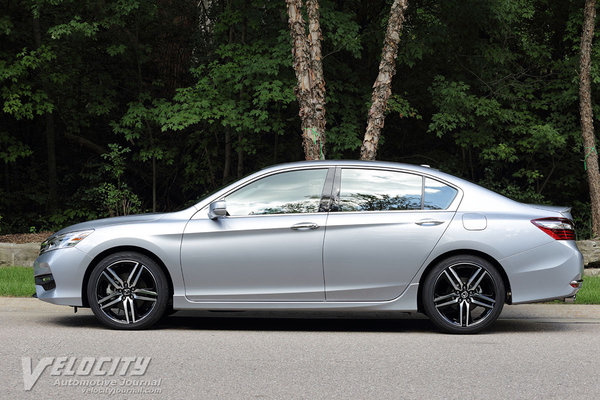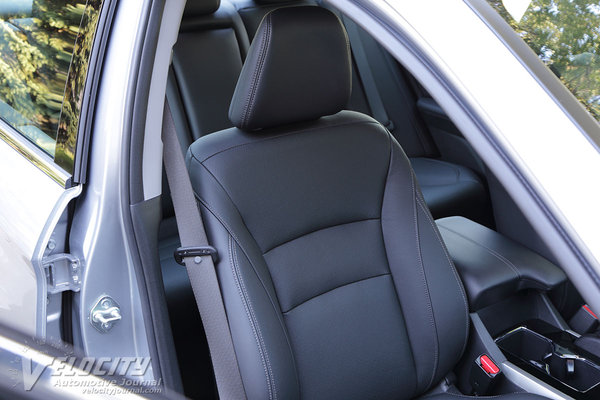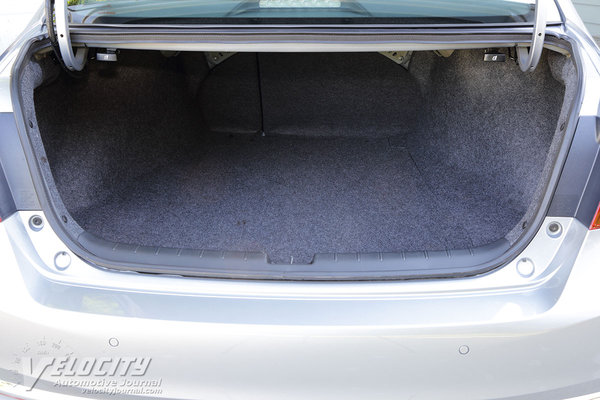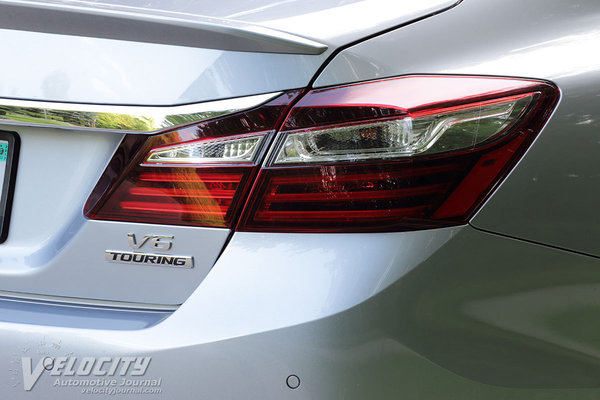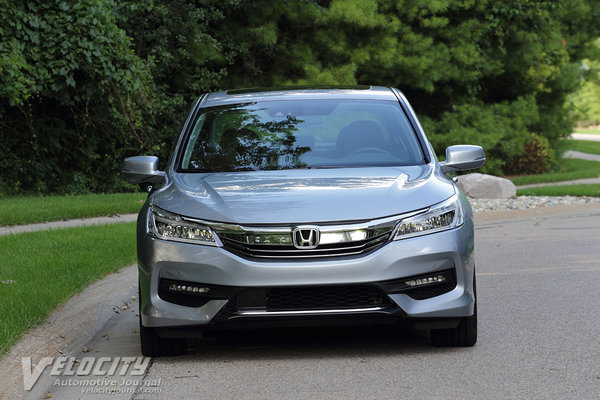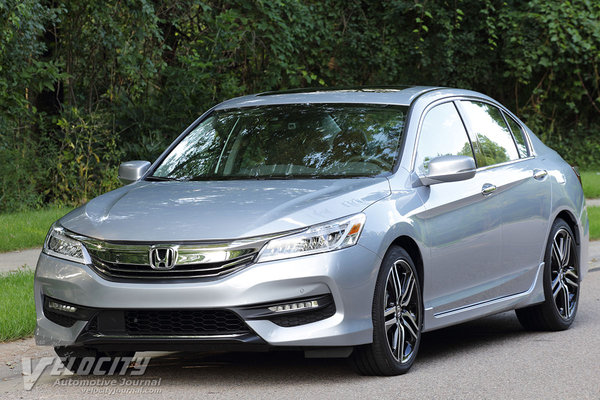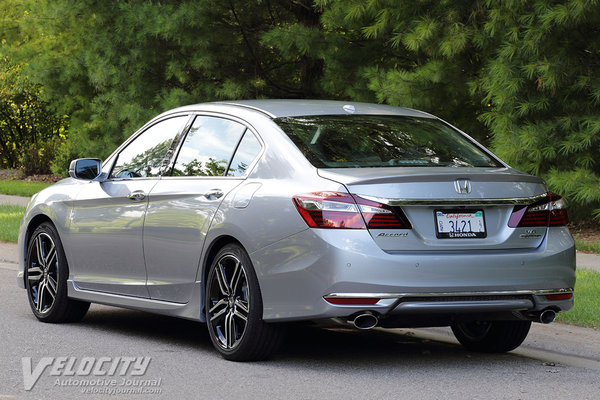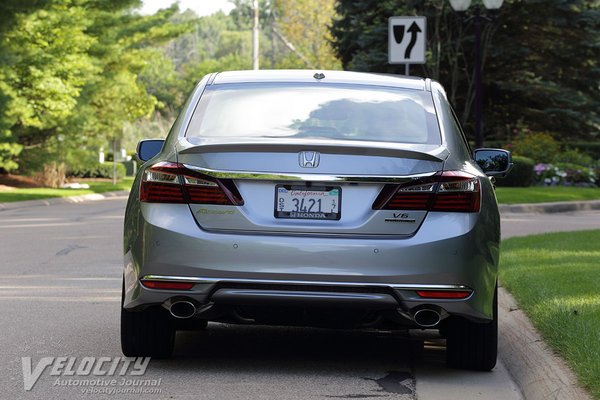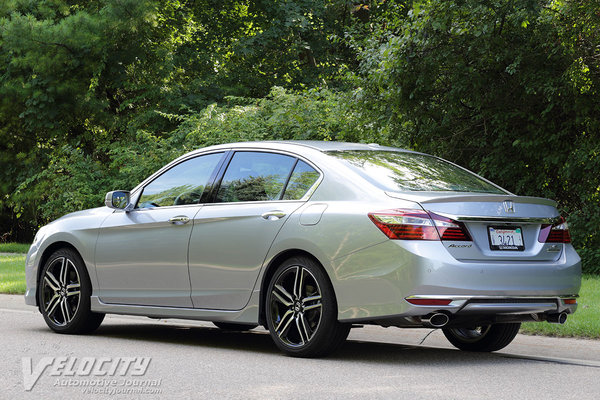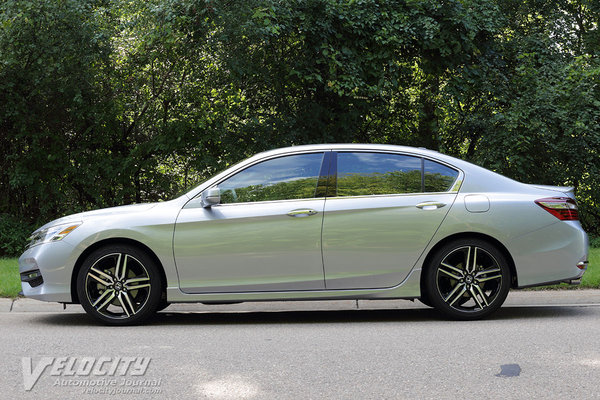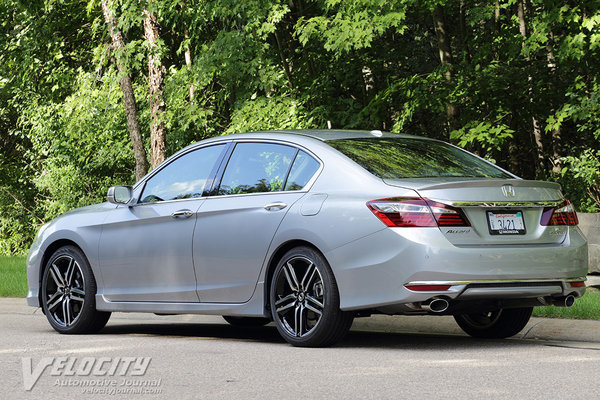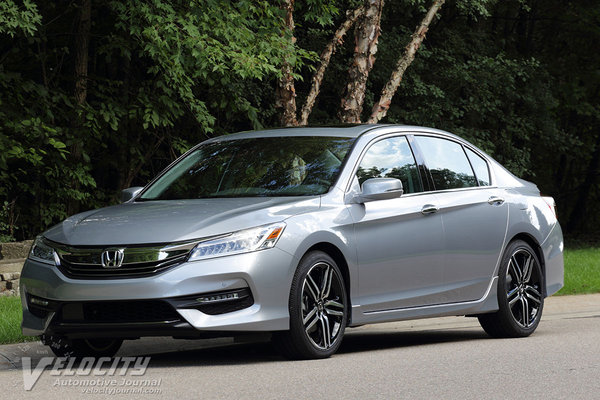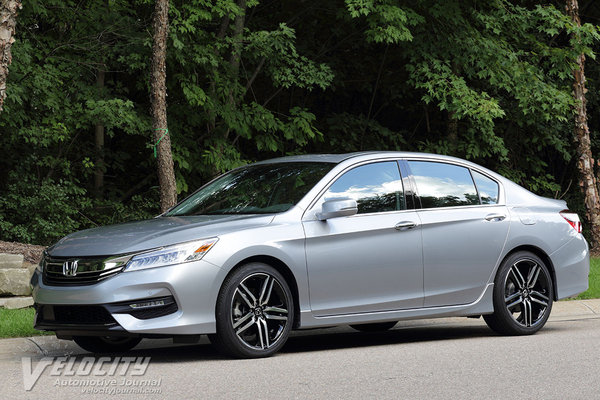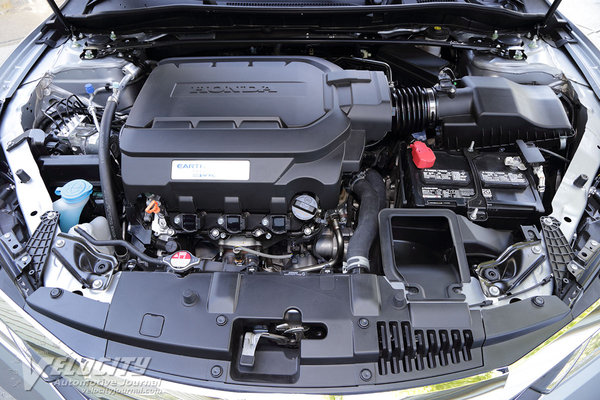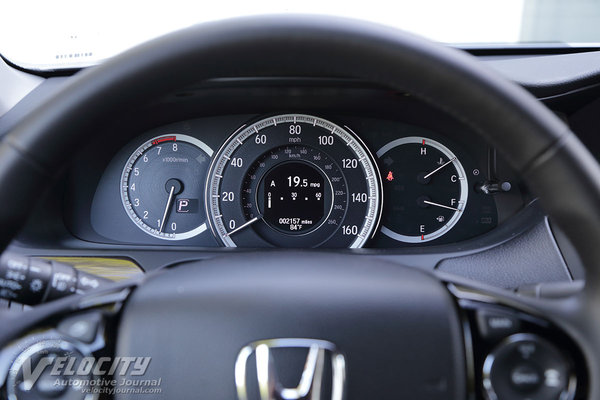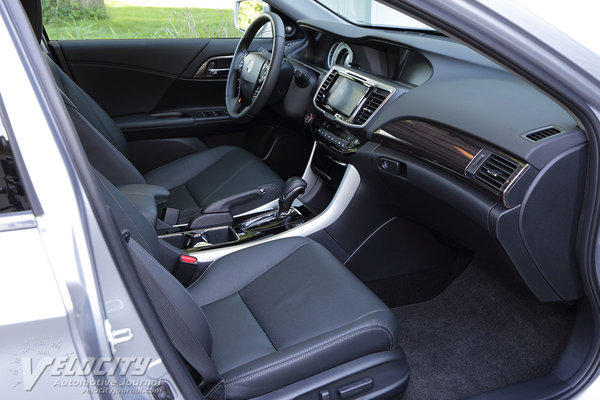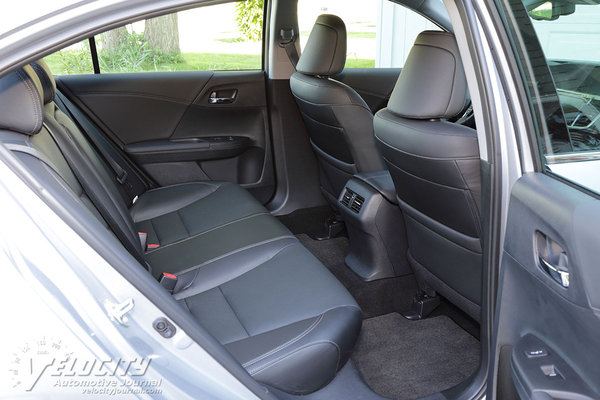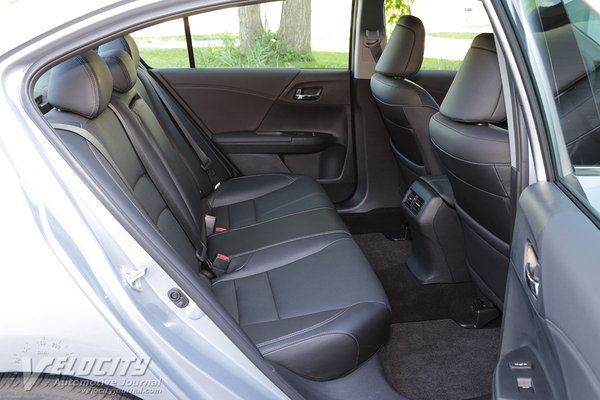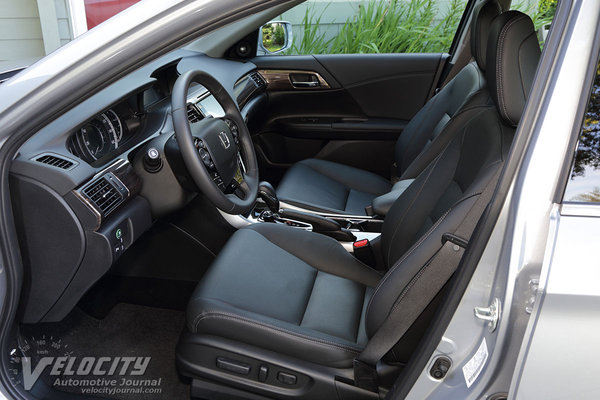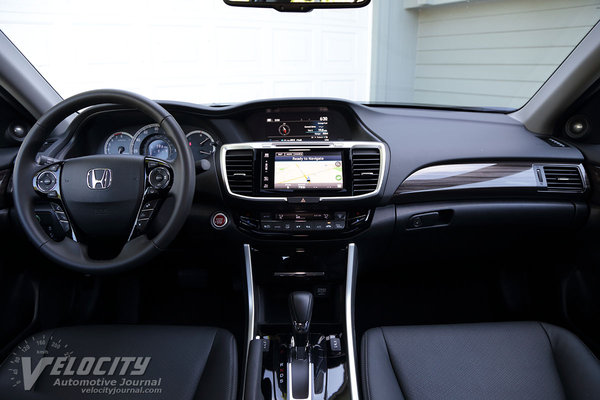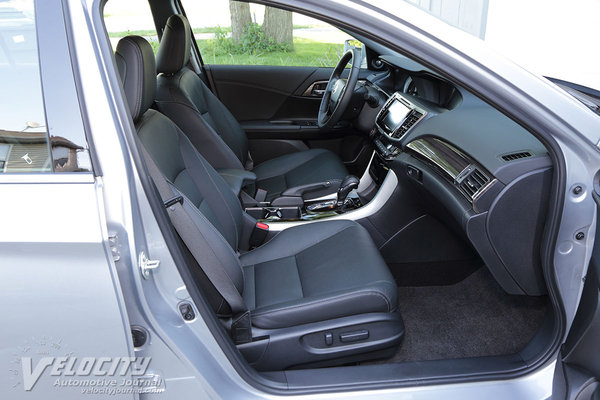2017 Honda Accord Touring
06/04/2017
Shahed Hussain
Affordable midsize sedans are available from all the mass market auto brands, yet the Accord continues to be a contender for the best-selling sedan in its class. Also available as a coupe, the Accord spans a range of price points to appeal to a wide audience. Alternative sedans include the Camry, Fusion, Altima, and Malibu. Other contenders such as the Sonata, Optima, and Mazda6 are also part of this crowded segment.
The Accord model range starts with the LX ($22,455) and tops out with the Touring ($34,930). In between are the Sport, Sport Special Edition, EX, and EX-L. An Accord Hybrid is also available. Our test vehicle was a 2017 Accord Touring with no options ($34,930). Adding the $875 destination and handling charge totaled up to an MSRP of $35,805. Standard equipment included leather seats, navigation, 19-inch alloy wheels, LED headlights, rearview camera, and a suite of active safety technologies.
As the top model in the lineup, the Accord Touring interior materials compare favorably to the closely related Acura TLX. Simulated glossy grey wood trim on the dash and doors appears remarkably authentic. The leather trimmed seats are supportive enough for long distance comfort. Both the driver (10-way with lumbar support) and passenger (4-way) seats are power adjustable. Only the Touring is equipped with front and rear heated seats; lesser Accords just get heated front seats. Rear seat occupants also benefit from spacious accommodations with decent legroom and thigh support. Even the middle passenger is treated with reasonably comfortable seating, unlike most other midsize sedans. Front and rear headroom is adequate for passengers up to 6 ft. tall, even with the sunroof.
The Accord's instrument cluster is clearly laid out with a large center speedometer, a smaller tachometer, plus coolant and fuel gauges on either side. A trip computer display within the speedometer shows fuel consumption and other vehicle data. A light around the speedometer glows green to encourage fuel efficient driving habits. Honda includes a green Eco button on the dash to optimize the powertrain for lower fuel consumption. Nestled within the spokes of the leather-wrapped steering wheel are audio, phone, and cruise controls. Dual stacked screens display vehicle functions and navigation maps. The lower touchscreen interface controls audio, navigation, and other infotainment functions. Instead of the complex menus typical of many navigation systems, the Accord's interface is simple to use. Unfortunately, the touchscreen lacks tactile feedback so operating the infotainment system is often a distraction. A volume knob and buttons for frequently used functions would surely reduce frustration. In contrast, the climate control system has logically labeled buttons so front seat occupants can independently set their preferred temperature.
Honda powers the Accord with a choice of a 185-bhp 2.4L inline-4 (189-bhp for Sport models) or a 3.5L all-aluminum V-6. The single overhead-cam six develops 278-bhp @ 6,200 RPM and a torque output of 252 lb.-ft. @ 4,900 RPM. Honda's Variable Cylinder Management (VCM) shuts down fuel flow to some cylinders to reduce fuel consumption under light load conditions. A six speed automatic mates to the V-6. Both fifth (0.754:1) and sixth (0.556:1) are overdrive ratios. Surprisingly, the transmission has only "D" and "S" (Sport) modes. No manual shift capability is available, unlike most other competing midsize sedans. Honda did calibrate the transmission for fast and seamless shifts, even in Sport mode, so we rarely needed a manual shift option. The EPA fuel consumption ratings for the V-6 are 21/33 MPG (city/hwy.). We averaged 20-21 MPG in mostly urban driving. The V-6 encourages aggressive throttle application, but driving with more restraint will likely reduce fuel consumption.
As with most midsize sedans, Honda uses MacPherson struts and a stabilizer bar in front, with a multi-link layout with coil springs, dampers and stabilizer at the rear. Disc brakes are at all four wheels; the Sport and Touring get larger 12.3 in. diameter vented front rotors. The tested Accord Touring had 235/40R19 Continental all-season tires on 19-inch diameter alloy wheels. All other Accords (except Sport models) are equipped with 17-inch or 16-inch diameter alloy wheels. Steering is via an electrically power-assisted rack-and-pinion setup. With only 2.47 turns lock-to-lock, the Touring has a relatively fast 13.49:1 ratio for more responsive steering. Accord curb weights range from 3,170 lbs. (LX/6-speed manual) to 3,605 lbs. (Touring/6-speed automatic).
The Accord's suite of active safety technologies include Vehicle Stability Assist (VSA), ABS, Forward Collision Warning, Lane Departure Warning, Collision Mitigation Braking System, and Road Departure Mitigation System. VSA and ABS are standard on all Accords, but the other technologies are available as options.
Honda's focus on handling comes through even on the most luxurious Accord. Accurate steering that communicates road surface texture make the driver feel connected to the road. The low profile tires and the tightly damped chassis endow the Accord with sporty handling that separates it from most of its rivals. We expected the Continentals and 19-inch diameter wheels to increase impact harshness, but even on the patched and potholed roads around Detroit, the Accord's chassis was surprisingly composed. We had no complaints about ride comfort either. Front and rear stabilizer bars minimize body roll around curves. The heavier V-6 models get larger 19 mm & 15 mm diameter (front/rear) stabilizer bars. Minimal understeer belies the Accord's 62% front weight distribution.
At 80-85 MPH, the Accord is stable and tracks smoothly on the highway. Tire and wind noise are subdued. The larger front brake rotors and a firm pedal provide reassuring braking performance from highway speeds. When approaching slower vehicles rapidly, the collision avoidance system flashes "brake" on the center instrument panel display. Making lane changes safer, engaging the right turn signal turns on the right rearview camera display on the navigation screen.
With 278-bhp available, the 3.5L V-6 has ample power for a fast launch from a stoplight or for passing maneuvers at highway speeds. As expected from Honda, the V-6 is smooth and refined from idle to redline. Engine noise never becomes objectionable at any RPM. The Accord's V-6 cranks out enough torque that mild torque steer is noticeable at full throttle, especially if the wheels are not pointing straight ahead. Powerful front-drive cars suffer from varying degrees of torque steer, so the Accord is no different than others in its class. Offering all-wheel drive would eliminate torque steer, but Honda reserves AWD for its Acura sedans.
The Accord continues to be one of the best affordable midsize sedans. Honda offers a wide range of Accord models to appeal to nearly everyone. Enthusiasts can opt for a manual gearbox (2.4L only) or a V-6, both increasingly rare options in this segment. We do wish that Honda would add manual shift capability for the automatic gearbox, but that is a minor complaint. In a sea of excellent midsize sedans, the Accord charts in own course.

